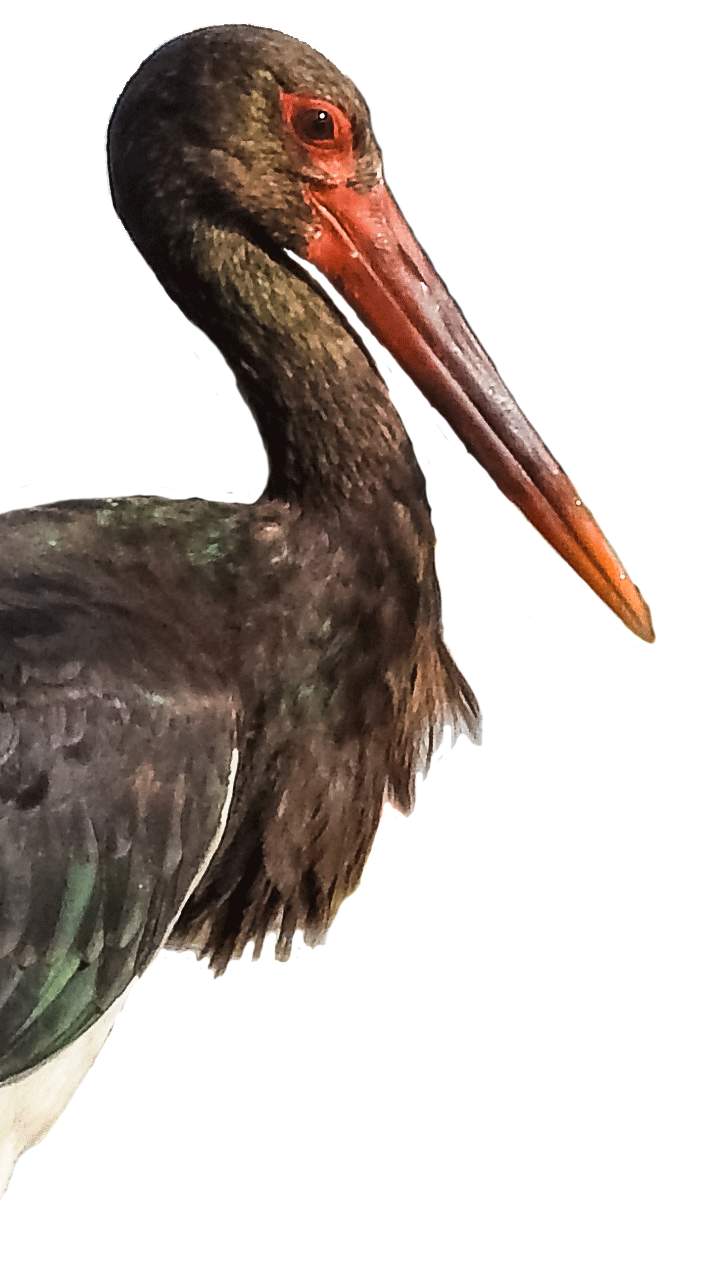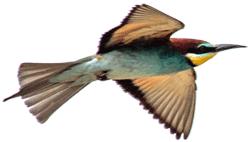
أستمتع بمشاهدة ومراقبة التنوع

European roller

"أَلَمْ يَرَوْاْ إِلَى الطَّيْرِ مُسَخَّرَاتٍ فِي جَوِّ السَّمَاء مَا يُمْسِكُهُنَّ إِلاَّ اللّهُ إِنَّ فِي ذَلِكَ لَآيَاتٍ لِّقَوْمٍ يُؤْمِنُونَ" النحل 79

أستمتع بمشاهدة ومراقبة التنوع

Osprey eagle

وَمَا مِن دَآبَّةٍ فِي الأَرْضِ وَلاَ طَائِرٍ يَطِيرُ بِجَنَاحَيْهِ إِلاَّ أُمَمٌ أَمْثَالُكُم مَّا فَرَّطْنَا فِي الكِتَابِ مِن شَيْءٍ ثُمَّ إِلَى رَبِّهِمْ يُحْشَرُونَ الانعام 38

Graceful prinia

Osprey eagle

إ"ِنَّ فِي السَّمَاوَاتِ وَالْأَرْضِ لَآيَاتٍ لِّلْمُؤْمِنِينَ وَفِي خَلْقِكُمْ وَمَا يَبُثُّ مِن دَابَّةٍ آيَاتٌ لِّقَوْمٍ يُوقِنُونَ" الجاثية 4-5

توقف عن قتل الطيور المهاجرة واستمتع بمشاهدة خلق الله

عيش ودع غيرك يعيش

إ"ِنَّ فِي السَّمَاوَاتِ وَالْأَرْضِ لَآيَاتٍ لِّلْمُؤْمِنِينَ وَفِي خَلْقِكُمْ وَمَا يَبُثُّ مِن دَابَّةٍ آيَاتٌ لِّقَوْمٍ يُوقِنُونَ" الجاثية 4-5


Juvenile shrike

Stonechat



Despite the fact Jordan occupies a relatively small geographical area, it possesses a wide variety of habitats, climatic regions, geologic structures, terrain and wildlife rivaling those of countries far larger in size. Wildlife and particularly avian is no exception; close to 450 species of bird was recorded to date the great majority of which are migratory and about 70 species resident. Many of the migrating species in fact end their journey here to breed such as for example stilts, avocets, lapwings, coursers and many more. The abundance and diversity of migratory birds is due to to this area's strategic location at the junction of three continents, Asia, Europe and Africa where designated annual migration corridors (flyways) were established and utilized by birds generation after another since thousands of years ago. Thanks to this strategic location that we get to see birds from all these continents. Migrating birds travel a considerable distance before arriving to their destination and come in all sizes from as small as European robins and warblers to as large as white pelicans, storks and eagles including all sizes in between. For serious birders, this is a heaven; a small country with great diversity.
Recently added
This is a continually developing site, new updates listed below
Pintail - Nov. 28, 2019
Eurasian spoonbill - April 12, 2023
Eurasian Wryneck – April 16, 2019
Common crane - Oct. 28, 2018
Booted eagle - Seb. 25, 2018
Kentish plover - Sep. 16, 2018













Land of beauty and diversity
Birds in Jordan are disbursed over a wide geographical area; the Eastern Plateau, the mountain regions along its western boarders, and the Dead Sea and the Jordan Valley region in its western extremity. Each of these regions is influenced by a distinct geology and climate and possesses its unique animal and plant species that adapted to live under the prevailing conditions. The Eastern Plataea is mostly an overgrazed or barren undulating terrain that stretches north to Syria, north east to Iraq, and east and south to Saudi Arabia. It ranges in elevation from 600-900 meters above sea level and occupies nearly 75% of the country. Annual rainfall is usually well below 100 mm increasing significantly in the western regions of the Plateau and generally decreasing in the more dry eastern and southern regions. The Eastern Plateau can be divided into three distinct geographical areas; the Basalt desert or the Al'Harra desert to the north which extends into Syria and Saudi Arabia, the Ruwayshid desert east of the basalt plateau which extends northeast to Iraq, and the Central Plateau which is by far the largest and occupies the entire region east of the desert highway all the way south to Wadi Rum. The later, the Central Plateau, can be further divided into the following zones, the northeastern desert immediately east of Amman city and includes the Azraq Oasis, Showmari Wildlife Reserve and several famous Islamic archaeological sites such as the Harrana and Amra Omayyad palaces, the Central Desert south and southeast of Amman city which includes Al'Abyad and Al'Hisa phosphate mines, Wadi Al'Sarhan Basin east of the Central Desert which is by far the largest of these zones and occupies more than 100 kilometers of the eastern boarders with Saudi Arabia, Al'Jafir Basin south of the Central Desert and finally Al'Mudawwara and Rum Basins in the southernmost extremity of the country.
Depending on the area, the Eastern Plateau is home to various resident species of bird. More common species include temminck's horned lark , bar-tailed desert lark, desert lark, the greater hoopoe lark with its beautiful soothing call, trumpeter finch, desert and red-rumped wheatear, and the cream colored courser. The very cautious thick-billed lark with its notably large and thick peek thus the name is not as common and is harder to spot. The basalt desert is well known for its endemic species of wheatear, the basalt wheatear only found in Jordan and southern Syria. Migrating birds abound in the Eastern Plataea and can be found almost anywhere from reserves to reservoirs to rain flood pools to opened country and even the side of the road. Flood pools start filling soon after the arrival of the first heavy rainfall which in some years may be as early as October and November and may hold on to the water till late in May depending on the amount of late rainfall. Birds migrate to warmer areas therefore, and depending on which region of the plateau, they are more likely to be encountered in flood pools when temperatures begin to warm up during the months of March and April. Rain flood pools are places of particular interest for any serious birder since many migrating birds tend to annually visit, rest and feed in these places, including egrets, stilts, avocets, waders, turns, lapwings, plovers and birds of prey. In years that witness heavy rainfall such as the winter of 2019, the increase of flood pools may cause migrating birds to disperse over a larger area in the Eastern Plateau. In the more southerly regions of the desert such Wadi Rum, the beautiful Sinai rose finch considered Jordan's national bird can be found in addition to other birds, raptors and vultures. The Eastern Plataea is home to various species of raptor resident and migratory including buzzards, kestrels and harriers.
The highlands or the mountainous regions of the country separate the Eastern Plateau to the east from the Rift Valley to the west. These mostly well vegetated mountains receive the highest amount of rainfall especially in the middle and northern parts of the country and extend along the western part of Jordan all the way from the north to the southernmost barren parts of the country and host the majority of the country's population centers. At Jabal Umm Al'Dami in southern Jordan close to the Saudi boarders, the elevation reaches its highest at 1854 meters. The western mountainous regions are penetrated by rivers such as the Zarqa River and many wadis (canyons) that begin in the rift valley and continue east for some distance. These narrow gorges or wadis are essentially side faults that emerged 24-25 million years ago when the Arabian Plate split from the African Plate during the early formation stages of the Dead Sea rift. Small mostly seasonal creeks that empty their waters in the Jordan River and/or the Dead Sea run through most of these wadis and birds including resident and migratory are encountered in abundance and variety here more so in the more northerly wadis. The highlands also include other favorable places for birds especially migratory such as reservoirs. The Mujib and Wala dams slightly south of Madaba city and King Talal dam south west of Jarash are some places to consider. To be adequately explored, some of these dams such as Wala and Mujib require a 4x4 vehicle since the more interesting birds tend to be found closer to the tributaries and shallows away from the main dam area and away from areas frequented by people.
Various bird species prefer various migratory corridors and coming from Europe and Eurasia, birds tend to yearly rest on their way in designated places. Wheatears for example in the months of March and April prefer higher mountainous rocky regions with little green cover overlooking the Rift Valley. A great area for documenting these birds would be south west of Naoor town following the old Dead Sea road to Turky village. There, they can easily be spotted perching on rocks and hardly ever on trees. Wadi Husban with a permanent water creek is only few kilometers south of Turky. On the downhill road leading to the canyon birds such as wheatears, larks, shrikes, rock thrushes, blackstarts, buntings, black caps and others may be encountered in season. Common kestrels are common on the rocky eroding limestone cliffs all year long and raptors including migrating buzzards and steppe eagles follow the canyon on their migration route. The sight of soaring and gliding raptors over the steep canyons as they take advantage of hot air rising from below (thermal currents) is spectacular. Some flocks may rest for few days in the area feeding on small birds, rodents and even insects before continuing on their migration.
The Jordan Valley extends throughout the entire length of the country along its western boarders with the occupied territories. The Jordan Valley began forming 24-25 million years ago when the Arabian Plate split from the African Plate forming what is known as the Dead Sea Transform fault system or the Dead Sea rift which extends from Anatolia in southern Turkey in the north to the southern tip of the Sinai Peninsula in the south. The transform fault section (the rift valley) that is part of Jordan is a highly distinctive feature not only for its remarkable geologic history but also to the presence of various well known landmarks within it including the River Jordan and the Dead Sea in addition to hosting the lowest spot on the Earth below sea level. With vegetable farms extending a sizable portion of its length, the Jordan Valley is literally Jordan's vegetable basket. Green most of the year and with scattered irrigation pools, it has become a heaven and a sanctuary for many resident and visiting bird. A pleasureful cruise through the farms and orchards, one is bound to see and record many species of bird. Indian silverbills, desert finches, all three species of kingfishers, mynas, swallows, stonechats, wagtails, egrets, sparrows including the Dead Sea sparrow if you're lucky enough are but few of the birds that can be encountered in the area.
From the northern tip of the Dead Sea till the city of Irbid in the north, there are four major reservoirs in the Jordan Valley area; Kafrain, Shoeib, Karama and Arab . The first three are within a distance of no more than 35 kilometers from each other and can be visited in the same day. Migrating birds often visit these reservoirs to rest and feed on fish and other food sources. One is likely to encounter and depending on the season of course various species of egrets and herons, storks, gulls, terns, sandpipers, shanks, bee eaters, birds of prey and many other. Egrets, herons, and Spur-winged lapwings are present throughout most of the year in Kafrain reservoir , in fact, lapwings multiply in the area. Also, it is a fine place to record the three kingfisher species and watch them as they hover and dive in water to catch fish. If you plan a visit to the reservoirs and you should consider such a visit, drive as if you are going to the Dead Sea and at the first military chick point in the low hills adjacent to the Valley, take a right, drive north for few kilometers and pay attention to signs, the Kafrain reservoir will be the first at your right hand side. To get to the reservoir, you will have to drive slightly uphill and once you are at the reservoir's level, the road is no longer paved. You may want to consider following the tributaries as far east as possible and that would necessitate a 4x4 to fully explore them and the areas adjacent to them not only for water birds but for other species that frequent this area such as the European rollers and cuckoo birds.








